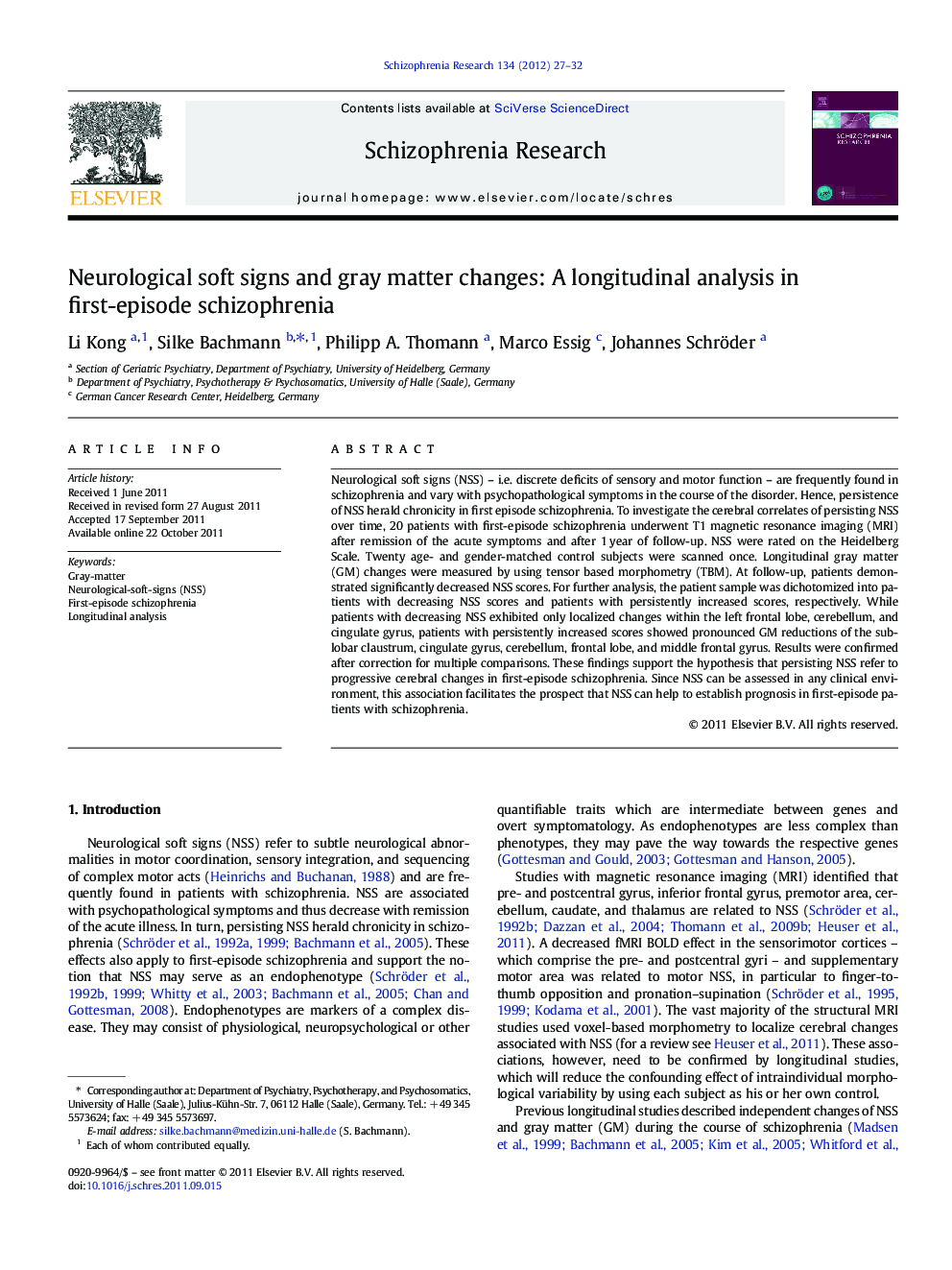| Article ID | Journal | Published Year | Pages | File Type |
|---|---|---|---|---|
| 10307496 | Schizophrenia Research | 2012 | 6 Pages |
Abstract
Neurological soft signs (NSS) - i.e. discrete deficits of sensory and motor function - are frequently found in schizophrenia and vary with psychopathological symptoms in the course of the disorder. Hence, persistence of NSS herald chronicity in first episode schizophrenia. To investigate the cerebral correlates of persisting NSS over time, 20 patients with first-episode schizophrenia underwent T1 magnetic resonance imaging (MRI) after remission of the acute symptoms and after 1Â year of follow-up. NSS were rated on the Heidelberg Scale. Twenty age- and gender-matched control subjects were scanned once. Longitudinal gray matter (GM) changes were measured by using tensor based morphometry (TBM). At follow-up, patients demonstrated significantly decreased NSS scores. For further analysis, the patient sample was dichotomized into patients with decreasing NSS scores and patients with persistently increased scores, respectively. While patients with decreasing NSS exhibited only localized changes within the left frontal lobe, cerebellum, and cingulate gyrus, patients with persistently increased scores showed pronounced GM reductions of the sub-lobar claustrum, cingulate gyrus, cerebellum, frontal lobe, and middle frontal gyrus. Results were confirmed after correction for multiple comparisons. These findings support the hypothesis that persisting NSS refer to progressive cerebral changes in first-episode schizophrenia. Since NSS can be assessed in any clinical environment, this association facilitates the prospect that NSS can help to establish prognosis in first-episode patients with schizophrenia.
Related Topics
Life Sciences
Neuroscience
Behavioral Neuroscience
Authors
Li Kong, Silke Bachmann, Philipp A. Thomann, Marco Essig, Johannes Schröder,
